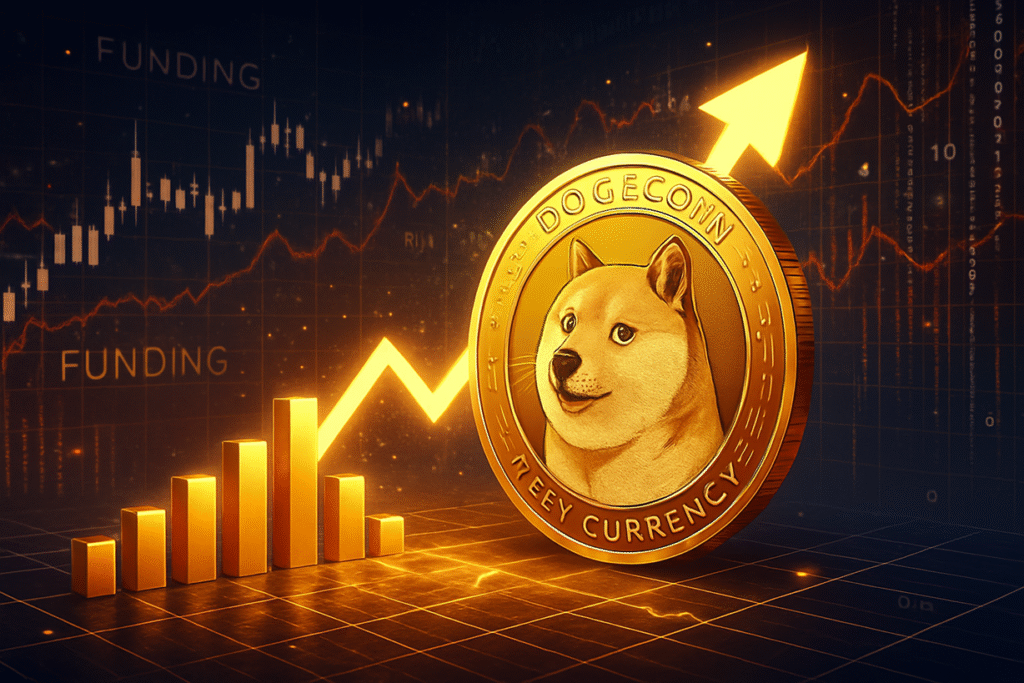In the ever-evolving world of cryptocurrencies, understanding key market indicators is crucial for both novice and seasoned investors. One such metric, the Funding Rate, provides valuable insight into the market’s sentiment by indicating the balance of long and short positions among traders. This guide delves into the Funding Rate’s role in shaping market dynamics and highlights its current impact on leading cryptocurrencies, particularly Dogecoin, which is at the forefront of this metric.
Analyzing Market Sentiment Through Funding Rates: A Look at Dogecoin and Other Major Cryptocurrencies
Understanding the Funding Rate in Cryptocurrency Trading
The Funding Rate is a pivotal indicator in the realm of perpetual futures trading on centralized derivative platforms. It quantifies the periodic fees exchanged between traders holding long and short positions. A positive Funding Rate suggests that traders with long positions are paying a premium, indicative of a bullish market sentiment. Conversely, a negative Funding Rate points to a dominant bearish sentiment, with short traders paying the fees to long traders.
The Current Landscape: Dogecoin Leads the Pack
Presently, Dogecoin stands out with a Funding Rate of 0.0092%, surpassing other top cryptocurrencies. This suggests a strong bullish sentiment among traders who anticipate a potential rise in Dogecoin’s value. Meanwhile, Bitcoin (BTC) and Ethereum (ETH) also exhibit positive Funding Rates of 0.0049% and 0.0062%, respectively, reflecting a modestly bullish market outlook. In contrast, Tron (TRX) finds itself in a bearish position with a Funding Rate of -0.0087%, highlighting the varying sentiments across the crypto market.
The Implications of Dominant Funding Rates
A significant aspect of the Funding Rate is its potential to trigger mass liquidation events. When one side, either long or short, becomes dominant, the likelihood of liquidation increases, especially in the event of adverse market movements. For Dogecoin, where the bullish sentiment is pronounced, long position holders face a heightened risk of liquidation if the market turns.
Measuring Market Optimism with Supply in Profit
Another critical metric to consider is the Supply in Profit, which measures the percentage of a cryptocurrency’s supply that is currently in profit. Cryptocurrencies like Bitcoin, Tron, and BNB boast over 90% of their supply in profit, signaling strong market confidence. However, Dogecoin and Solana present a contrasting scenario, with less than 50% of their supply in profit, indicating a more cautious market sentiment towards these coins.
Dogecoin’s Price Movement
As of now, Dogecoin is valued at approximately $0.1666, marking a decline of over 15% in the past week. This price movement reflects the inherent volatility in the cryptocurrency market and the dynamic nature of trader sentiment.
Frequently Asked Questions
What Drives the Funding Rate in Cryptocurrency Markets?
The Funding Rate is influenced by the balance of long and short positions held by traders. Market sentiment, influenced by factors such as news events, technical analysis, and macroeconomic trends, plays a crucial role in determining whether the Funding Rate is positive or negative.
How Can the Funding Rate Impact My Trading Decisions?
Understanding the Funding Rate can provide insights into the prevailing market sentiment. A high positive rate suggests bullish sentiment but also implies potential risks of long position liquidation. Traders should consider these dynamics when entering or adjusting their trading positions.
Is Dogecoin a Reliable Investment Amidst Its Volatile Trends?
Dogecoin’s investment potential lies in its active community and frequent market buzz. However, its price volatility necessitates careful market analysis and risk management strategies before making investment decisions.
In conclusion, this comprehensive guide sheds light on the intricacies of Funding Rates and their impact on cryptocurrency markets. By exploring key indicators and market sentiments, readers can make informed decisions in this fast-paced financial landscape.

